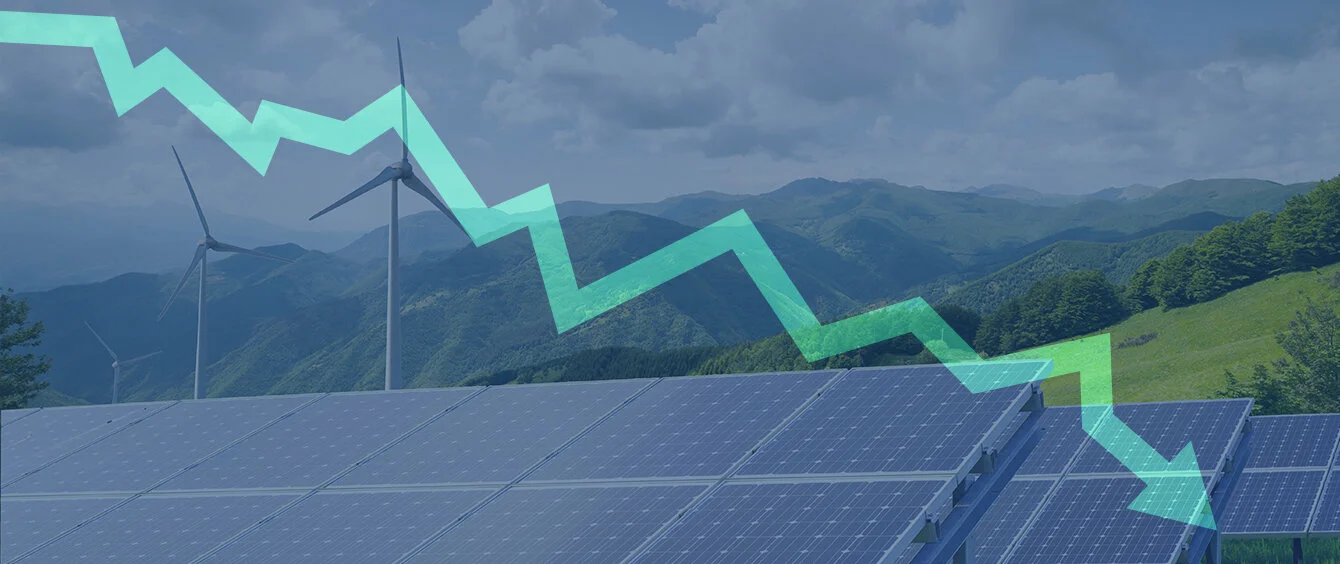The cost of renewable energy technologies has fallen dramatically over the last decade, making them an ever more affordable option for utilities and consumers.
According to an annual survey and analysis carried out by investment bank Lazard, the Levelized Cost of Energy (LCOE) for crystalline solar photovoltaics plummeted by 89% in the decade to 2019, while wind energy costs plunged 70%.
Onshore wind and utility scale solar are now the most economical form of electricity generation, coming in substantially below any form of fossil fuel generation on a new build basis. According to the Lazard study new build onshore wind fell below the cost of the cheapest form of fossil fuel power – Combined Cycle Gas Turbines – in 2011, while solar PV passed this milestone in 2016.
The implications of such a change in the economics of energy provision are of fundamental importance. As the World Energy Council argues, the world faces an energy ‘trilemma’, in effect a trade-off between energy security, affordability and sustainability.
As the cost of renewable energy falls, it starts to meet all three of these goals, generating clean, cheap, domestically-produced energy. But why does the cost of some forms of energy generation fall further and faster than others?
Capital versus operational costs
Two key factors are interest rates and fuel prices, which have very different effects for example on coal-fired electricity generation in comparison with wind or solar.
The proportion of capital spending to operational spending for wind and solar is high because the fuel cost is zero. Once the turbine or panel is up, the running costs are low. In contrast, a coal plant will incur both capital costs and ongoing fuel costs over the course of its life.
Interest rates over the last decade have been exceptionally low and this has favoured technologies with a high proportion of capital to operational costs. Fuel costs in comparison have been volatile, experiencing very high levels in the period from 2011-2014, for example.
Scale and simplicity
However, this does not fully explain wind and solar’s exceptional economics.
Another reason is simplicity. In effect, the more a technology resembles a factory ‘widget’ the more cost gains will be made on the manufacturing side. Although complex in their development, when it comes to production, solar cells and panels are classic factory widgets, which now roll off production lines in their millions, benefitting heavily from economies of scale in the manufacturing process.
Solar cells have not just become more efficient, but cheaper to make.
Like wind and solar, nuclear plants have high capital costs in comparison with operational costs, so low interest rates have been beneficial. But the increasing complexity of plant designs and need to incorporate new safety features has seen costs rise by 26% over the last decade, according to Lazard.
Future cost trajectories
Looking into the future there are broadly two sets of factors which determine costs, those which are inherently unpredictable and potentially volatile, for example raw materials and fuel costs, and those which are more predictable, such as learning effects, ongoing innovation, economies of scale and standardisation.
The comparison between solar cells, which lend themselves to factory mass production, and nuclear, where plants designs are increasingly complex, suggests simplicity and safety will continue to deliver substantial benefits.
Scaling up wind
The other star of the energy sector when it comes to falling costs is wind, which has seen substantial cost gains in both the on- and offshore sectors over the last decade.
In its 2019 study, Lazard placed the unsubsidised mid-point for offshore wind at just $89/MWh, significantly below the mid-point for new coal-fired generation and well below the low-end cost point of $118/MWh for new nuclear plant.
As with solar energy, cost gains have come from increased scale. The Global Wind Energy Council (GWEC) estimates the offshore wind sector grew by 21% a year on average between 2013 and 2019.
Moreover, innovation and learning rates have been high. Cost reductions have come not just on the manufacturing side — economies of scale in production — but from literal scale – the size of the turbines themselves. Bigger blades and and taller towers are able to access better wind resources higher up more efficiently.
As the industry rolls out ever larger units and explores more modular onshore production, for example via floating wind farms, it is reasonable to assume that offshore wind can continue on its downward cost trajectory.
Indeed, confidence is so high that in its 2019 market report, GWEC estimated that an LCOE as low as $50/MWh is now within reach for the sector.
Photo credit: geniusksy, shutterstock.com / Eightshot_Studio, shutterstock.com
